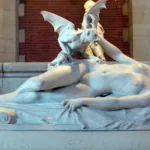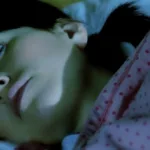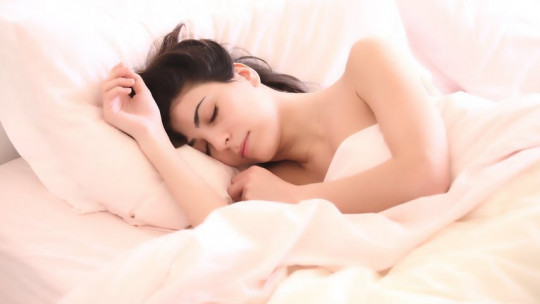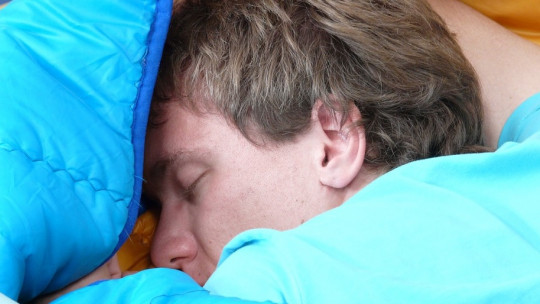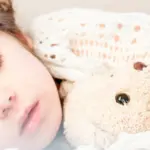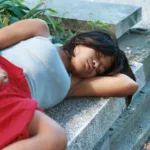
Sleeping is an act that we do every day with complete naturalness.. But for some people, sleeping becomes a difficult situation, because, during the night, their disorders emerge, some of them extremely serious.
The strangest sleep disorders
In previous articles we already talked about the 7 psychological signs that show you should sleep more and a general introduction to sleep disorders.
Today we deal with sleep pathologies that, either due to their frequency or their symptomatology, seem more strange.
1. Sexsomnia (sexual sleepwalking)
The sexsomnia is a sleep disorder that causes people experience sexual arousal and even orgasms while sleeping. Some experts consider it a variant of classic sleepwalking. In some cases, sufferers are aware of their behavior before they seek help, but do nothing about it for fear of what people will think of them.
This pathology has been confirmed by researchers who have made videos of patients with this disorder, and unusual brain activity has been observed while the acts were happening. Sexsomnia is a serious pathology for those who suffer from it and for their partners.
2. REM sleep behavior disorder
He REM sleep behavior disorder either rapid eye movement sleep behavior disorder It is characterized because the person loses the usual paralysis during the REM phase of sleep, causing them to act freely while dreaming.
The person who suffers from this disorder can behave very violently and in some cases can hurt both themselves and the person with whom they share the bed. To treat this disorder, anticonvulsant or antiepileptic drugs are usually administered. Although clonazepam is usually prescribed, which, despite being an anxiolytic, has anticonvulsant effects.
3. Sleep bruxism
Sleep bruxism is a disorder that It is characterized by the presence of involuntary movements of rhythmic chewing muscle activity. (such as clenching or grinding your teeth) and micro-awakening phenomena.
This disorder can cause serious dental problems, facial pain or headaches, in addition to serious chronic problems. Many individuals who suffer from this disorder are not aware of it and only 5-10% develop symptoms of jaw pain or headache.
4. Periodic limb movement disorder
He periodic limb movement disorder (PLMD) is similar to restless legs syndrome, characterized by unpleasant sensations in the legs and an uncontrollable urge to move when resting. People often describe strange sensations, like their limbs burning or insects crawling up the inside of their legs.
80 percent of people who suffer from restless legs syndrome suffer from this disorder. PLMD can present symptoms in any of the four extremities. Treatment includes anticonvulsant drugs and benzodiazepines.
5. Night terrors
He night terror is an awakening parasomnia characterized by a extreme terror and a temporary inability to regain consciousness. Many may think that night terrors are the same as nightmares, but the latter occur entirely within the REM phase of sleep and result in a complete awakening. On the other hand, during night terrors, it is almost impossible to wake the subject.
In fact, when you are awakened, you may continue to experience the dream for 10 to 20 minutes. This disorder can be very harmful to the subject, who may be traumatized or may injure themselves or others very severely.
If you want to delve deeper into this topic, in our article “Night terrors: panic during sleep” we explain this sleep disorder in detail.
6. Disorder due to sleep-wake cycle other than 24 hours
This strange disorder consists of a pathology of the circadian rhythm in which the person’s biological clock is not synchronized with the 24-hour daily cyclethat is, the individual’s body does not recognize the sleep-wake cycle and. Therefore, the person cannot adapt to a regular sleeping pattern.
If this disorder is not treated, it causes the person’s sleep-wake cycle to change each day, causing serious health problems. Research suggests that the majority of blind people, who do not perceive light, may suffer from this disorder, in addition to presenting the sleep problems that characterize it.
7. Sleep apnea
The sleep apnea is characterized by pauses in breathing during sleep. The pause does not last long, and the individual regains normal breathing with a loud snore. It occurs in the REM phase and transitions into light sleep, causing the person to not rest properly.
People who suffer from this disorder are not aware of having breathing problems during sleep, so people close to them usually discover it. It can take years and even decades before it is diagnosed.
8. Kleine-Lane syndrome
He Kleine-Lane syndrome yousleeping beauty syndrome It is a strange neurological syndrome characterized by the need for excessive sleep, sometimes up to 20 hours a day. These symptoms are usually accompanied by excessive food intake and excessive sexual desire (hypersexuality), compulsive behaviors and neglect of personal hygiene.
There is no specific treatment for this disorder, but stimulant drugs such as amphetamines or methylphenidate are often used to treat excessive sleepiness. Sometimes, due to the similarity of this disorder with other mood disorders, lithium and carbamazepine can be used.
9. Somniloquy
The somniloquy, noctilalia is a disorder that It is characterized because the person who suffers from it talks when they are asleep. You may speak very loudly, from mouthing words to saying long sentences, and people listening may not be able to understand what the person is saying.
Although sleep talking is very common, chronic somniloquy in adults is considered a sleep disorder and is believed to be a product of prolonged exposure to tension, physical and mental fatigue, or high levels of stress.
10. Narcolepsy
The narcolepsy It is a disorder that is characterized because The person who suffers from this psychopathology has sudden sleep episodes during waking hoursand they can fall asleep for 2-5 minutes anywhere.
Narcoleptics wake up feeling clear. It can happen anywhere: in line at the movie theater, talking to others while out for a walk. These individuals lack slow wave sleep and go directly into the REM phase. For treatment, a medication called Xyrem is usually given, which is better known as liquid ecstasy or GHB.

